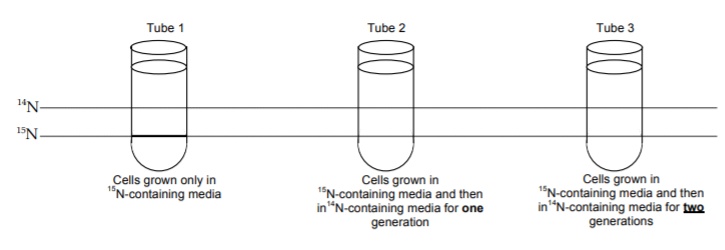Practice Problems
Write your answers on a separate piece of paper or a digital document.
Practice Problems for Molecular Biology, Session 1: DNA Structure, Classic Experiments
Question 1
In 1928, Griffith performed a series of experiments where he infected mice with two different strains of pneumonia-causing bacteria (S. pneumonia): the smooth/virulent, disease causing S strain and the harmless rough/ non-virulent R strain. You have three unknown samples (A/ B/ C) of S. pneumonia and want to characterize them. You inject these samples into mice both individually and in combination. You then obtain blood samples from the injected mice and culture the bacteria present. You also record whether the mice live or die. Your observations are summarized in the following table.
| Set 1 | Sample Injected | Response of the Mice | Type of Strain Recovered from Mice |
|---|---|---|---|
| 1 | A | Dead | Live S Strain |
| 2 | B | Live | None |
| 3 | C | Live | Live R Strain |
| 4 | A+B | Dead | Live S Strain |
| 5 | A+C | Dead | Live R and S Strain |
| 6 | B+C | Dead | Live R and S Strain |
a) Assuming that each sample (A, B, and C) contained only one type of bacterial strain, what type of S. pneumonia is found in each sample? Choose from live smooth/virulent, heat-killed smooth/virulent, live rough/non-virulent, or heat-killed rough/non-virulent. Provide an explanation for your classification.
Sample A:
Sample B:
Sample C:
Question 2
The Meselson-Stahl experiment suggested that DNA replicates in a semi-conservative manner. E. coli cells were grown for several generations in a media with 15N. These E. coli cells were then transferred into a 14N media and allowed to replicate their DNA. DNA was extracted from the cells grown in 14N-containing media and separated by cesium chloride density centrifugation. In tube 1 below, you see the band formed by the DNA isolated from cells grown exclusively in 15N media. On the schematic below, draw the band(s) that you would expect in tubes 2 & 3 if the DNA duplex is copied by a semi-conservative mode of replication.

